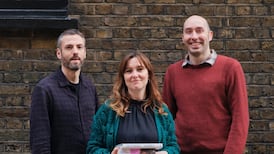BIOGRAPHY: Dorothea Lange: A Life Beyond LimitsBy Linda Gordon Norton, 560pp. £25
DOROTHEA LANGE'S photography has been the subject of several dozen books, but to date there has been only one full-length biography, the seminal A Photographer's Life, by Milton Meltzer, published in 1978. Written just 13 years after Lange's death, when most of her friends and family were still available for consultation, Meltzer's tome was so thorough that no rival emerged for more than three decades.
Linda Gordon's new account of the photographer's life, Dorothea Lange: A Life Beyond Limits, presents the first challenge to Meltzer's work, and therefore must answer a crucial question: does it add much to our understanding of Lange and her time?
Dorothea Lange was born in 1895 in the New Jersey suburb of Hoboken. At the age of 22 she set out to travel the world, but got only as far as San Francisco. She established a successful photographic studio where the moneyed families of the area came to have their portraits created.
By the early 1930s Lange’s social conscience drew her away from the comfort of the studio and into the streets and fields to document the human cost of the Great Depression, the refugees from the US Dust Bowl who had arrived in California.
She was one of the first photojournalists, or documentary photographers, and to many of us she remains the greatest. Her images of the United States during the 1930s are the most enduring impressions of the Great Depression. Her image of a destitute mother of seven that she captioned Migrant Mother, Nipomo, California,1936, is one of the world's most reproduced photographs.
Gordon brings to this familiar story a wealth of new, and almost-new, material that deepens our understanding of Lange. For example, we learn of the friendship that arose between Lange and another great female artist of the 20th century, Frida Kahlo. The two met when the Mexican came to San Francisco in 1930 with her artist husband, Diego Rivera.
They recognised in each other an artistic flair, charm and political commitment, and they bonded through the shared experiences of childhood polio that left a lifelong humiliating limp, and the anxiety of marriage to a brilliant, but unfaithful, artist (in Lange’s case, her first husband, Maynard Dixon). Lange offered Kahlo the use of her studio, and “gave” her her personal physician, Leo Eloesser, whom the latter used until her death 24 years later.
As there is no account of this friendship in Hayden Herrera’s definitive biography of Kahlo, it should be considered a minor coup for Gordon. But we should also note that Kahlo wrote in a letter from San Francisco around the same time: “I have no women friends . . . and that’s why I spend my life painting”.
This new biography of Lange will be of special interest to Irish readers for two reasons. The first: she outs Albert Bender. The Dublin-born Jewish philanthropist, who supported Lange by being the first to purchase her work as art, is usually referred to as a “bachelor” who “had no heirs”. Gordon breaks the code and labels him “gay”. She supports this with comment by Maynard Dixon, who described Bender as “a lisping mincing Jewish homosexual”.
Bender's collection of Asian art, which he donated to the National Museum of Ireland during the 1930s, is currently on show at the museum's Collins Barracks location under the title A Dubliner's Collection of Asian Art: the Albert Bender Collection.
The other special area of interest for Irish readers concerns Lange’s trip to Co Clare in 1954 and the 2,400 photographs that she took during her month-long stay. Readers should be aware that this reviewer is too close to this part of Lange’s work to be regarded as an unbiased commentator on Gordon’s treatment of it, but there is sufficient evidence to suggest she did not give it its due respect.
Gordon dedicates just four of her 430 pages to Lange’s Irish work. Lange herself gave this material five out of 88 pages in the lifetime retrospective book, assembled the year she died. Gordon adds a comment by the photo curator Therese Heyman, who considered Lange’s foreign trips a waste of her time: “Dropped into a culture she did not understand, Dorothea could not know if what she was seeing was typical or unusual.”
Heyman’s comment may be true of Lange’s work in Korea, Venezuela, Egypt and other places where she tagged along on trips that had been organised for her second husband, Paul Taylor. These were not destinations of her choice; not projects she had pursued.
The same cannot be said of her work in Ireland, a trip that was organised solely for her professional needs. It was her first time outside the US, and she arrived well prepared and well funded. She knew what she was looking for, and she got it. She even spent time in New York trying to follow up the story of women she had photographed in Co Clare before they left for the US.
Dorothea’s son, Daniel Dixon, often commented that some of her best work was done in Ireland, and I would favour that view over Heyman’s.
Despite this, Gordon’s work does indeed add much to our understanding of Lange and her time. It is a feminist critique without being a turn-off for non-feminists. It is detailed and well researched but isn’t weighed down by academic or weighty prose. Her account of the origins of the United States’ Dust Bowl disaster is worthy of any economics or history journal, but it is accessible to non-economists and historians, too.
It will provide a joyful read for those interested in photography, female role models, the lives of great artists and United States history in the first half of the 20th century, especially as it relates to the human cost of environmental degradation.
Gerry Mullins is the author of Dorothea Lange's Irelandand co-producer of Photos to Send, a documentary on Lange's Irish work








